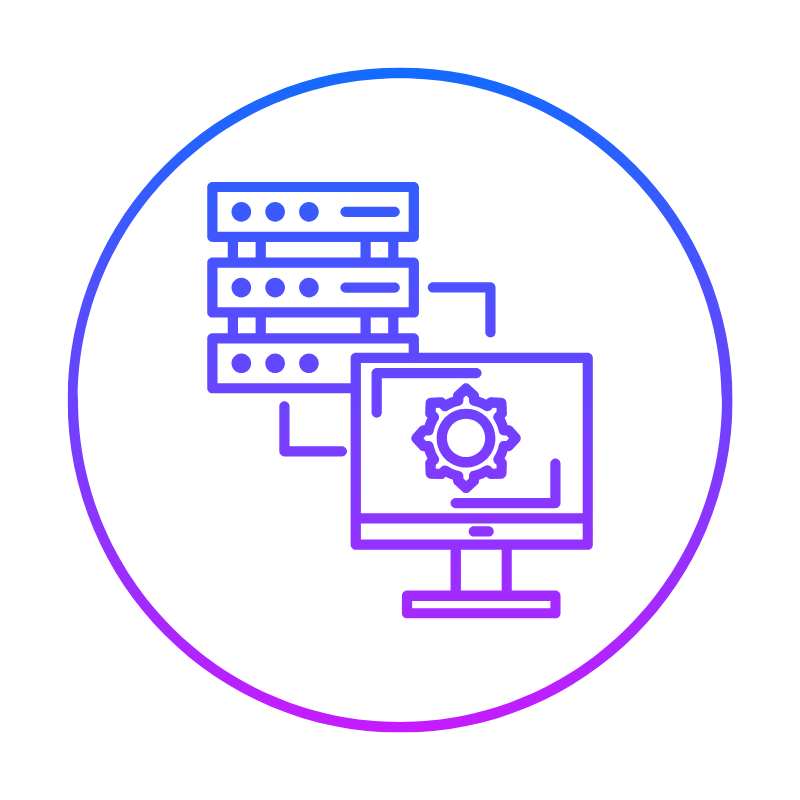Last updated on September 23rd, 2025 at 09:18 am
Philippine typhoon season brings more than just heavy rains and strong winds, it can devastate your business operations in minutes. When Typhoon Odette struck in December 2021, thousands of Filipino businesses lost everything: websites crashed, servers flooded, and customer data vanished into thin air.
Ready to typhoon-proof your business? Get reliable cloud hosting from TrueHost Philippines and never worry about storm-related downtime again.
You know what’s worse than losing power during a storm? Watching your competitors stay online while your business goes dark for days.
That’s where cloud and VPS hosting becomes your business lifeline. Let me show you exactly how to protect your Filipino enterprise from the next big storm.

Why Filipino Businesses Get Crushed During Philippine Typhoon Season
Here’s a reality check, the Philippines faces an average of 20 typhoons each year. Yet most local businesses still rely on hosting solutions that crumble the moment winds pick up.
The Brutal Truth About Typhoon Damage
Last year alone, Philippine typhoon season cost businesses over ₱50 billion in losses. Most of this damage? Completely preventable with proper hosting infrastructure.
Your traditional shared hosting provider probably runs servers from a single location. When that area floods or loses power, your website dies. Simple as that.
Consider this, during Typhoon Karding in 2022, businesses using local servers experienced an average of 72 hours of downtime. Meanwhile, companies with cloud hosting stayed operational throughout the entire storm.
What Happens When Your Server Goes Underwater

Picture this scenario, you’re running an online store from your home office in Quezon City. Suddenly, flood water reaches your server room.
Your business doesn’t just go offline, it disappears completely.
Customer orders vanish. Email communication stops. Your years of hard work become digital memories floating in murky water.
This isn’t fear-mongering. This is the harsh reality facing thousands of Filipino entrepreneurs every Philippine typhoon season.
Traditional Hosting
Most small businesses in the Philippines still use hosting that depends on:
- Single physical locations vulnerable to flooding
- Power grids that fail during storms
- Internet infrastructure that gets damaged by wind
- Backup systems that don’t actually work when needed
These setups worked fine twenty years ago. But in today’s digital economy, one day of downtime can kill your business.
Understanding Cloud and VPS Hosting
Let’s break down why cloud and VPS hosting can save your business when Mother Nature throws her worst at the Philippines.
Cloud Hosting
Think of cloud hosting like having multiple safety nets spread across different countries. When one net fails, others catch your business seamlessly.
Your website doesn’t live on one server in one location. Instead, it exists across multiple data centers in places like Singapore, Japan, and Australia.
Philippine typhoon season can flood Manila, but it can’t touch servers sitting safely in Tokyo.
Here’s how it works, if disaster strikes your primary server location, your website automatically switches to backup servers in unaffected areas. Your customers never notice the difference.
VPS Hosting
VPS stands for Virtual Private Server. Imagine renting your own floor in a high-tech building instead of sharing a cramped apartment with strangers.
With VPS hosting, you get:
- Dedicated processing power that doesn’t slow down during traffic spikes
- Complete control over your hosting environment
- Scalability to handle emergency traffic surges
- Better security than shared hosting options
During emergencies, this matters enormously. When everyone rushes online to check storm updates, your VPS keeps running smoothly while shared hosting crashes.
Cloud vs VPS
| Feature | Cloud Hosting | VPS Hosting |
|---|---|---|
| Geographic Redundancy | Excellent | Limited |
| Automatic Failover | Yes | Depends on setup |
| Scalability | Instant | Manual scaling |
| Cost for Small Business | Higher initially | More affordable |
| Technical Knowledge Required | Minimal | Moderate |
For most Filipino businesses, cloud hosting offers superior protection during Philippine typhoon season. The automatic failover alone can save your reputation when storms hit.
Essential Features for Typhoon-Resistant Hosting in the Philippines
Not all hosting providers offer real protection against natural disasters. Here’s what you absolutely need before the next Philippine typhoon season arrives.
Geographic Redundancy
Your hosting provider must have data centers spread across multiple continents. When shopping for hosting, ask these critical questions:
- Where exactly are your servers located?
- How many backup locations do you maintain?
- What happens if an entire region goes offline?
Secure multi-location hosting with TrueHost Philippines and sleep peacefully during every storm.
The best providers offer servers in at least three different countries. This geographic spread ensures your business survives even the most devastating regional disasters.
Uptime Guarantees That Actually Matter
Every hosting company promises 99.9% uptime. But during Philippine typhoon season, those promises often evaporate faster than puddles in summer heat.
Look for providers offering:
- 99.99% uptime guarantees (not just 99.9%)
- Automatic compensation for downtime
- Detailed service level agreements
- Transparent uptime reporting
Remember: the difference between 99.9% and 99.99% uptime equals about 43 minutes vs 4 minutes of downtime monthly. During emergencies, every second counts.
Automated Backup Systems
Manual backups fail when you need them most. Automated systems work even when you’re evacuating your family to higher ground.
Your hosting solution needs:
-
Real-time backups: Changes saved instantly, not just daily
-
Multiple backup locations: Copies stored in different countries
-
One-click restoration: Get back online within minutes
-
Regular backup testing: Ensuring your safety net actually works
Philippine typhoon season doesn’t wait for convenient backup schedules. Neither should your protection strategy.
Step-by-Step Guide
Ready to bulletproof your business against the next big storm? Here’s your complete action plan.
1: Assess Your Current Vulnerabilities
Start with an honest evaluation of your existing setup. Most Filipino businesses discover shocking weaknesses once they look closely.
Quick vulnerability checklist:
- Is your server located in the Philippines?
- Do you have automatic backups running daily?
- Can you access your website management from anywhere?
- Does your hosting provider offer 24/7 support?
- Have you tested your disaster recovery plan?
If you answered “no” to any question, your business is vulnerable during Philippine typhoon season.
2: Choose Your Hosting Provider Wisely
Not all hosting companies understand the unique challenges facing Filipino businesses during typhoon season.
Essential provider requirements:
- Data centers outside the Philippines
- 24/7 customer support (including Filipino holidays)
- Transparent pricing in Philippine pesos
- Local payment methods accepted
- Proven track record during past storms
Research providers thoroughly. Read reviews from other Filipino business owners. Ask specific questions about disaster recovery procedures.
3: Plan Your Migration Strategy
Moving to new hosting sounds scary, but it’s easier than rebuilding from flood damage.
Migration timeline:
- Week 1: Choose your new hosting provider and plan
- Week 2: Set up your new hosting environment
- Week 3: Test everything thoroughly before switching
- Week 4: Complete the migration during low-traffic hours
Start this process during dry season—well before Philippine typhoon season begins. Rushing migrations during storm warnings leads to mistakes.
4: Set Up Monitoring and Alerts
Once you’re protected, stay informed about your business status even during power outages.
Configure alerts for:
- Website downtime longer than 2 minutes
- Unusual traffic spikes or drops
- Server performance issues
- Backup completion confirmations
Modern smartphones can receive these alerts even when your office loses internet connection.
Budget-Smart Solutions for Small Filipino Businesses
Protecting your business doesn’t require breaking your budget. Here are practical options for enterprises of every size.
Starter Protection Plans
Small Filipino businesses can get solid protection starting around ₱500 monthly. These entry-level plans typically include:
- Cloud hosting with basic redundancy
- Daily automated backups
- Email support during business hours
- Standard uptime guarantees
While not as comprehensive as premium options, starter plans offer significant improvements over traditional shared hosting.
Government Support Programs
The Department of Trade and Industry offers digitalization grants for Filipino businesses upgrading their technology infrastructure.
The Department of Information and Communications Technology also provides cloud-first adoption incentives. These programs can offset 30-50% of your hosting upgrade costs.
Application deadlines vary, so research available programs before Philippine typhoon season begins.
Beyond Hosting
Proper hosting provides your foundation, but complete protection requires additional strategies.
Communication Backup Systems
Ensure total business continuity with TrueHost.ph’s comprehensive solutions – from hosting to communication tools.
Maintain multiple internet connections:
- Primary broadband service
- Secondary provider as backup
- Mobile data plans for emergencies
- Satellite internet for extreme situations
Store emergency contact lists in cloud-based systems accessible from any device.
Document and Data Protection
Move all critical business documents to cloud storage services like Google Drive or Microsoft OneDrive.
Essential documents to digitize:
-
Business registration certificates
-
Tax documents and receipts
-
Customer contracts and agreements
-
Employee records and payroll data
-
Insurance policies and claims documentation
Philippine typhoon season can destroy physical documents in minutes. Digital copies remain safe in multiple global locations.
Take Action Before the Next Storm Hits
Every Philippine typhoon season brings the same heartbreaking stories: businesses that could have survived with proper preparation.
Don’t become another casualty statistic.
The meteorologists at PAGASA predict increasingly intense storms in coming years. Climate change makes every typhoon season more dangerous than the last.
Your business deserves protection that works when it matters most.
Key takeaways for Filipino business owners:
-
Traditional hosting fails during natural disasters
-
Cloud and VPS hosting provide automatic storm protection
-
Geographic redundancy saves businesses during regional disasters
-
Automated backups work even during evacuations
-
Government programs can help offset upgrade costs
The next major storm could hit tomorrow. Or next month. Or during the peak of this year’s Philippine typhoon season.
But whenever it arrives, you’ll be ready.
Your competitors might lose everything to the next big typhoon. Your business will keep running smoothly, serving customers and generating revenue even while the storm rages outside.
The choice is yours. Stay vulnerable, or start protecting your business today.
The Philippine typhoon season waits for no one—but proper preparation ensures you’re ready for whatever Mother Nature throws your way.
Read Also:
 Web HostingCost-effective shared hosting solutions
Web HostingCost-effective shared hosting solutions Reseller HostingStart your own hosting business without tech hustle
Reseller HostingStart your own hosting business without tech hustle Affiliate ProgramEarn commission by referring customers to our platforms
Affiliate ProgramEarn commission by referring customers to our platforms cPanel HostingHosting powered by cPanel (Mostly user friendly)
cPanel HostingHosting powered by cPanel (Mostly user friendly) Windows HostingOptimized for windows based-applications and sites
Windows HostingOptimized for windows based-applications and sites Domain SearchFind and register available domain names in seconds
Domain SearchFind and register available domain names in seconds All DomainsExplore and register domain extensions across the world
All DomainsExplore and register domain extensions across the world Domain Transfermove your domain to us with zero downtime and full control
Domain Transfermove your domain to us with zero downtime and full control Whois LookupLook up domain ownership, expiry dates and registrar information
Whois LookupLook up domain ownership, expiry dates and registrar information .com DomainSecure the most recognized domain for global credibility
.com DomainSecure the most recognized domain for global credibility VPS HostingScalable virtual servers. Full root access. Faster speed.
VPS HostingScalable virtual servers. Full root access. Faster speed. Managed VPSNot a tech expert? Choose our fully managed VPS server.
Managed VPSNot a tech expert? Choose our fully managed VPS server. Dedicated ServersGet the full power and complete control of your own physical server.
Dedicated ServersGet the full power and complete control of your own physical server.
